Fractions,Decimals,and Percents
NCTM Learning Principle
Students must learn
mathematics with understanding,
actively building new knowledge
from experience and prior knowledge.
Math Web Class
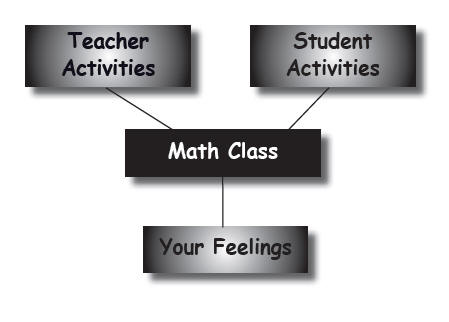
Tangram Pattern Sheet 1
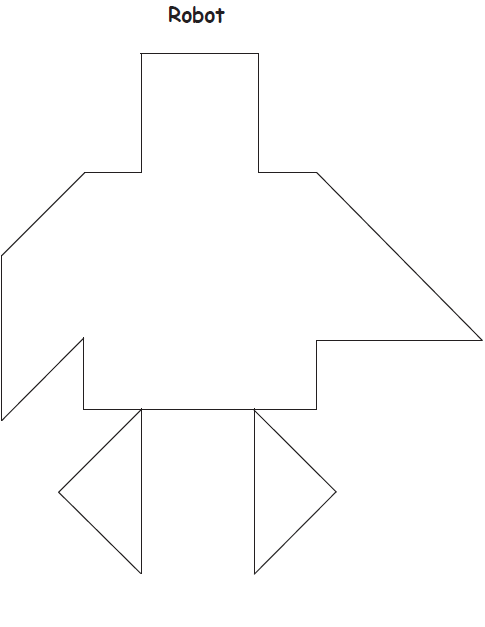
Tangram Pattern Sheet 2
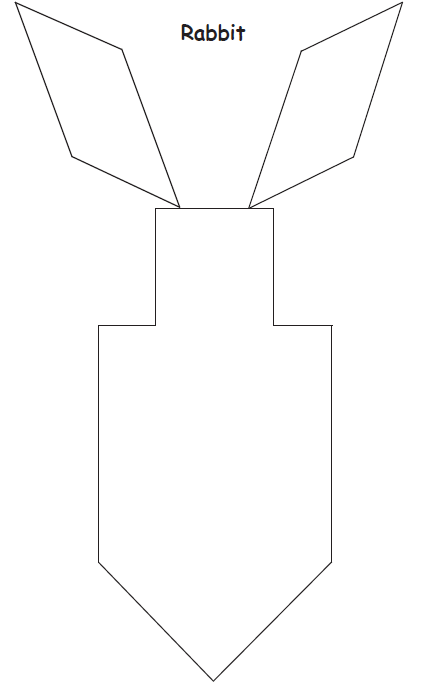
Tangram Pattern Sheet 3
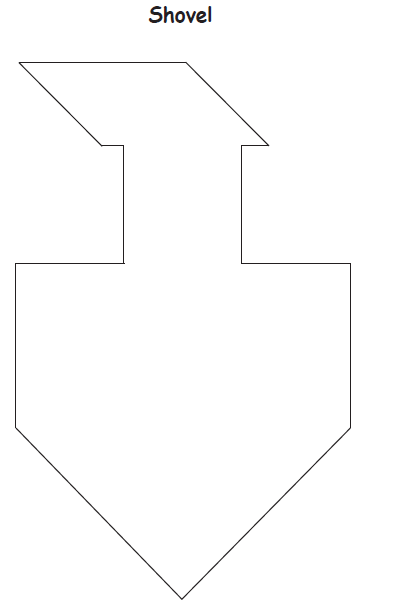
Tangram Pattern Sheet 4
Square
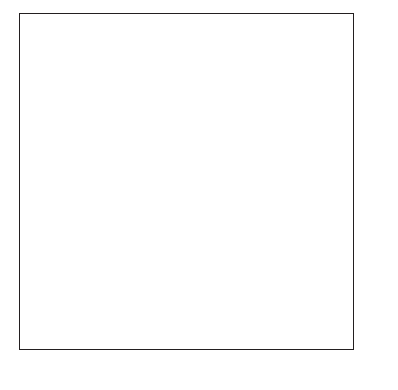
Tangram Pattern Sheet 5
Rectangle
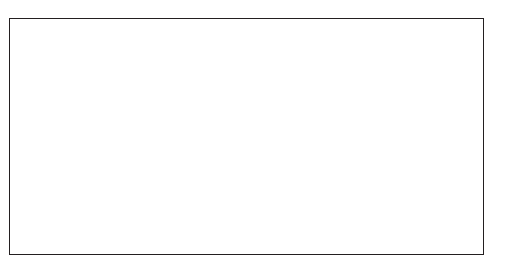
Tangram Pattern Sheet 6
Triangle
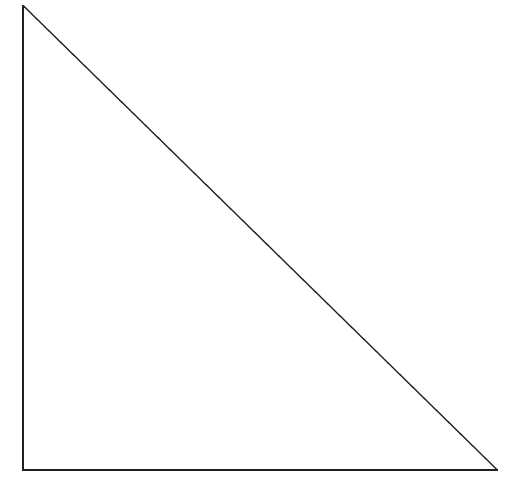
Fraction Activities
with Tangrams
In your day-to-day experiences
A) This week, look for ways you see and use fractions, decimals, percents. Write
your observations down or cut out examples (from magazines, newspapers, etc.).
You will share these with us at our next class meeting and add to the class
chart.
B) Ask your children where they use fractions, decimals and percent in their
lives. What examples of their uses can they think of? Write these down and share
them at the next class.
With your grades K-3 children:
A) Take a set of Tangrams and Pattern Sheets home. Before showing your K-3 child
the Pattern Sheets, ask your child to make as many shapes/designs as he/she can
using the pieces. Try to make a sailboat, a house, a rabbit or any other design.
B) Show your child the Tangram Pattern Sheets. Ask him/her to fill in the shapes
using the Tangrams. Does your child solve this kind of problem in the same way
that you did?
With your grades 4-8 children:
A) Take a set of Tangrams and Pattern Sheets home. Ask your grade 4-8 child to
fill in the shapes using the Tangrams. Does your child solve this kind of
problem in the same way that you did?
B) Give your child the same problem we did in class. “What is the value of each
piece if the entire set is worth $8.00 (or $12.00, or $1.60, or $1.00).” Ask
your child to explain his/her thinking.
With your grades 9-12 children:
A) Take a set of Tangrams and Pattern Sheets home. Ask your grade 9-12 child to
fill in the shapes using the Tangrams. Does your child solve this kind of
problem in the same way that you did?
B) Ask your child to estimate the percent each of the pieces is of the whole
set. Ask your child to explain how he/she is making the estimates. Ask him/her
to how he/she would go about finding out exactly what percent each piece is of
the whole set. (Your child does not need to actually find the exact
percentages.)
Instructional programs from prekindergarten
through grade 12 should enable all students to--
• Build new mathematical knowledge
through problem solving.
• Apply and adapt a variety of
appropriate strategies to solve
problems.
Color Tile Collections
Find a collection of color tiles to fit each description below
Write the equivalent fraction name for each color using
the
total number of tiles as the denominator.
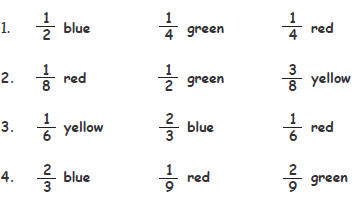

Find a collection of color tiles to fit each description
below.
The symbol  means “the mystery amount.”
means “the mystery amount.”

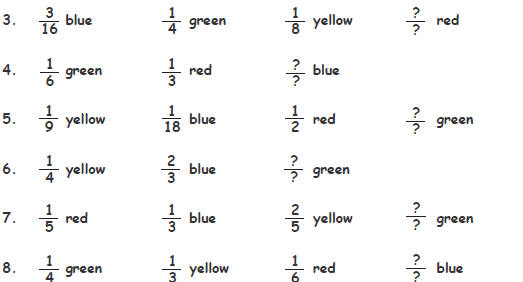
Bringing Mathematics Home 2
Fraction Activities with Color Tiles
With your grades K-3 children:
Take out a total of 12 color tiles in two colors (perhaps red and blue).
A) Ask your child to determine whether the red tiles in the collection are
“exactly half,” “more than half,” or “less than half” of the collection.
B) Encourage your child to explain his/her reasoning.
C) Ask the same set of questions for other fractions like one-third and
one-fourth.
D) Use 18 or 24 tiles in two colors and ask the same questions.
With your grades 4-8 children:
Take out a collection of color tiles using all four colors.
A) Ask your child to name a fraction for each color in the collection.
B) Encourage your child to find equivalent names for fractional parts when
possible.
C) Ask your child to explain his/her understanding of how one color can have
more than one fractional name.
With your grades 9-12 children:
Pose some of the Color Tile Mystery problems to your child.
A) Ask him/her to solve them both with and without color tiles.
B) Ask him/her to explain his/her thinking when solving them without tiles.
Fraction Problems I
Solve using color tiles, other objects, or a picture.
1. Carla spent  of her
allowance on a CD and
of her
allowance on a CD and  of her allowance on a
new book. What part of her allowance does she have left?
of her allowance on a
new book. What part of her allowance does she have left?
2. A large bag of flour is
 full. The pastry chef used
full. The pastry chef used
 of this flour to bake a cake. What part of a
full bag did she use?
of this flour to bake a cake. What part of a
full bag did she use?
3. Rita has read 360 pages in her book. The book has 570
pages in it. Is she more or less than  of the
way through her book?
of the
way through her book?


